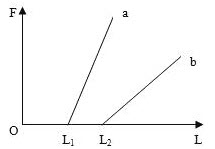Comparisons were drawn between the development of television in the 20th century and the diffusion of printing in the 15th and 16th centuries. Yet much had happened between. As was discussed before, it was not until the 19th century that the newspaper became the dominant pre- electronic (61) , following in the wake of the pamphlet and the book and in the (62) of the periodical. It was during the same time that the communications revolution (63) UP, beginning with transport, the railway, and leading on through the telegraph, the telephone, radio, and motion pictures into the 20th-century world of the motor car and the air plane. Not everyone sees that process in (64) . It is important to do so.
It is generally recognized, (65) , that the introduction of the computer in the early 20th century, (66) by the invention of the integrated circuit during the 1960s, radically changed the process, although its impact on the media was not immediately (67) . As time went by, computers became smaller and more powerful, and they became "personal" too, as well as (68) , with display becoming sharper and storage (69) increasing. They were thought of, like people, (70) generations, with the distance between generations much (71) .
It was within the computer age that the term "information society" began to be widely used to describe the (72) within which we now live. The communications revolution has (73) both work and leisure and how we think and feel both about place and time, but there have been (74) view about its economic, political, social and cultural implications. "Benefits" have been weighed (75) "harmful" outcomes. And generalizations have proved difficult.
(62)处填()。
A.process
B.company
C.light
D.form
参考答案:B
解析:
[分析]: (62)空可以应用“对应成分分析法”来解题,可以看出in the(62) of 这个短语结构与 in the wake of形成对应,其实是同样的意思。我们知道in the wake of作为已知信息是“伴随、一同”的意思,本题的答案一定是in the company of。

